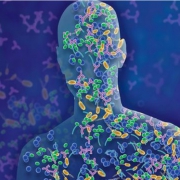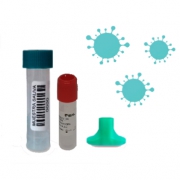The circulating DNA to diagnose possible genetic anomalies in fetuses
The circulating DNA to diagnose possible genetic anomalies in fetuses
The circulating DNA is that group of DNA molecules that circulates freely through the outside of the cells, by the blood, the urine, as well as in other body fluids. They are found in fragments of great length, that is to say, those that have from less from 500 bases to 21,000 base pairs.
It is also known as free DNA. The extraction of this DNA for its study in the laboratory is done through plasma or blood, since they are two easily manipulated and extractable liquids. To do so, it is important to have first quality materials that allow us a solid and accurate study of these cells of the organism, because through these reports we can diagnose different diseases.
Types of circulating DNA
According to the scientists, based on the origin of the circulating DNA sample, we can find three fundamental types:
- Normal circulating DNA. It consists of degraded DNA fragments that they have been released into the bloodstream.
- The circulating fetal DNA, which comes from mostly the placenta of the mothers. Actually it comes specifically from the fetus and it is a DNA that circulates freely in the bloodstream of the mother.
- Tumor circulating DNA, which comes from cancer cells that have a Generally, of the tumor in which they are found. Your concentration is greater as the disease progresses.
Applications of circulating DNA
The circulating DNA is important because very information is extracted from its study valuable that will help us determine the state of health in which the person is from which the sample has been obtained. So, for example, in the case of fetuses we can help: diagnose possible genetic anomalies before birth; know the sex of the child before birth or without the need for any ultrasound (This is possible the analysis of specific sequences of the Y chromosome, which are performed following a presence / absence criterion); know the child’s RH to be able to rule out the hemolytic disease of the newborn (at this point you have to know that occasionally, the mother’s immune system produces antibodies during pregnancy they attack the red blood cells of their own fetus.
 A fact that occurs, only, when the mother and the baby have different types of blood); determine diseases monogénicas (taking into account that with circulating DNA analysis that are performed at present, only diseases transmitted by the mother can be known and no for the mother); or study fetal aneuploidies (or, what is the same, alterations of the number of chromosomes that involve loss or gain of complete chromosomes).
A fact that occurs, only, when the mother and the baby have different types of blood); determine diseases monogénicas (taking into account that with circulating DNA analysis that are performed at present, only diseases transmitted by the mother can be known and no for the mother); or study fetal aneuploidies (or, what is the same, alterations of the number of chromosomes that involve loss or gain of complete chromosomes).
And all this without the need to implement invasive techniques that endanger the life of the fetus or its mother. In this case, the test is done from the sixth week of pregnancy.
With the information obtained from the fetal circulating DNA analysis we can overtake many events and diseases, so it is vital importance its realization at present. It has even allowed to avoid treatments aggressive or complicated for pregnant mothers. Something common when there problems with the HR of the pregnant woman and the fetus. Situations in which the inclusion of analysis of the circulating DNA for the group pregnant Rh- has allowed the suppression of the immunoprophylaxis treatment when the fetus was also of the Rh- group.
In Durviz we have all the instruments you need to perform these tests. Do not you have more to visit our website and know the wide variety of products first quality we offer. A fact that has led us to be considered as one of the best business initiatives in the health sector worldwide.






Leave a Reply
Want to join the discussion?Feel free to contribute!